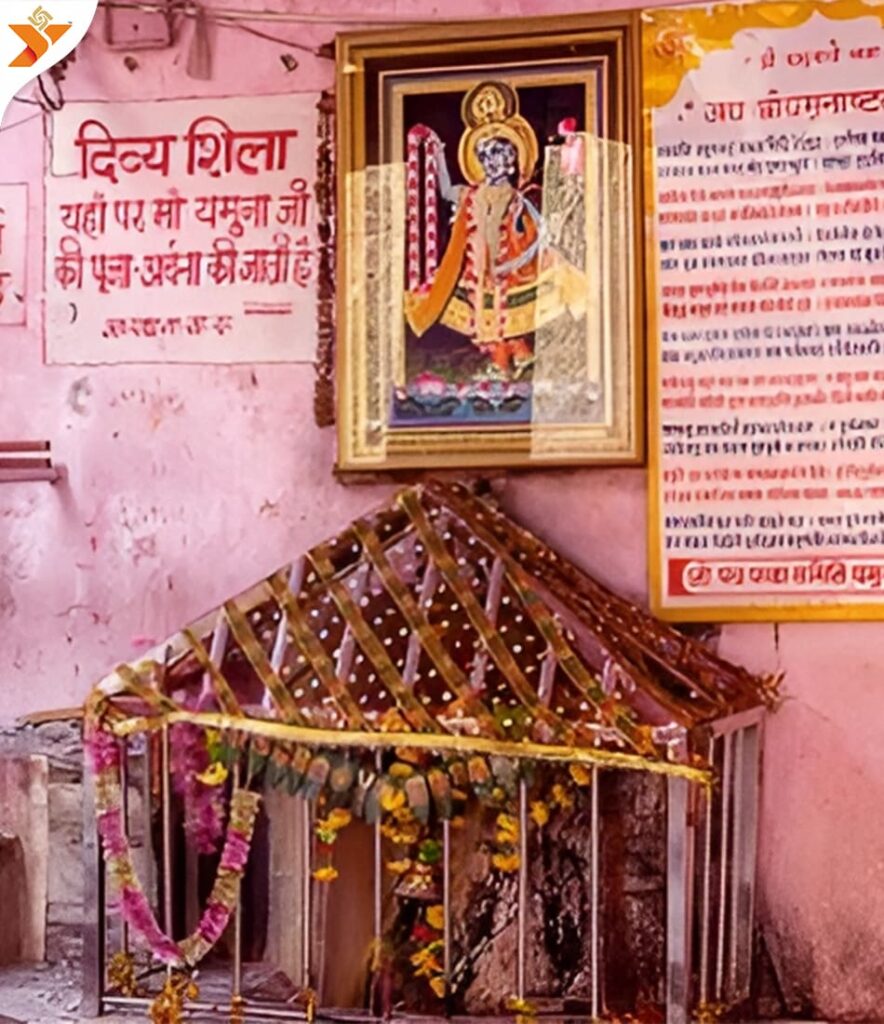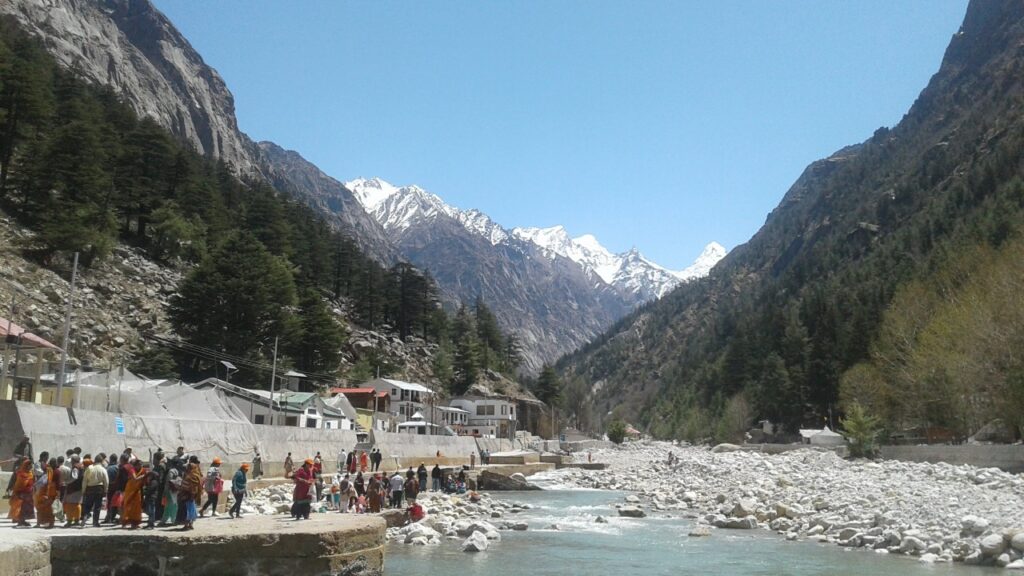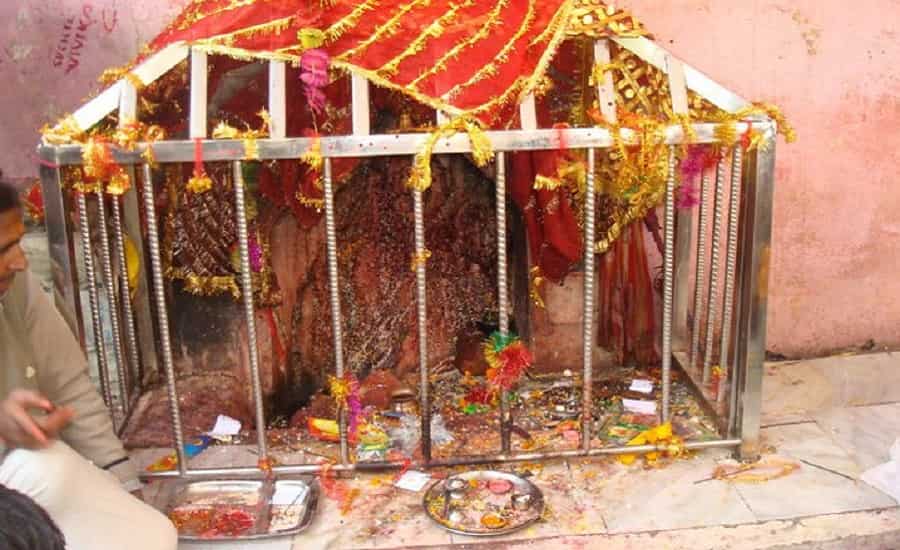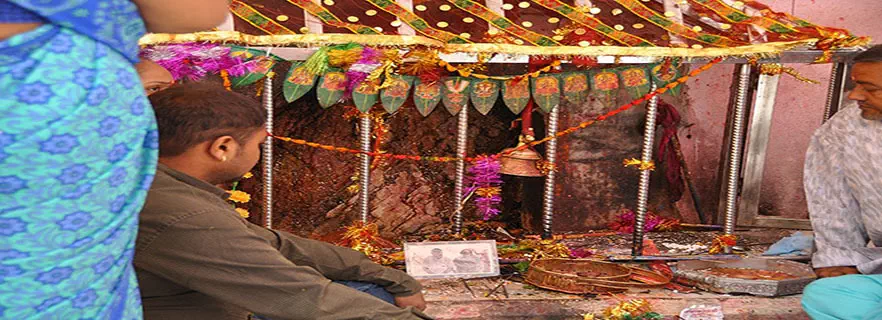Nestled amidst the snow-clad Himalayas in Uttarakhand lies Yamunotri, the sacred source of the holy Yamuna River. Pilgrims from across India and beyond journey here to pay respects to Goddess Yamuna at her temple. But before stepping into the temple sanctum, every devotee halts at a sacred rock, the Divya Shila, which literally means the divine stone.
This radiant stone, standing gracefully near the Yamunotri Temple, is not an ordinary piece of rock. It is a symbol of reverence, a witness to centuries of devotion, and a reminder that faith often begins with the simplest gestures. The Divya Shila, though modest in appearance, holds a grandeur in its spiritual significance that resonates deeply with pilgrims.

The Meaning of Divya Shila
The word “Divya” means divine, radiant, or blessed, while “Shila” means stone. Together, Divya Shila can be understood as the “Sacred Stone of Radiance.” For devotees, it is not just a rock but a spiritual entity that connects them with the energy of the divine.
Traditionally, before offering prayers inside the Yamunotri Temple, pilgrims first bow before the Divya Shila. This act symbolizes purification of the self, humility before nature, and respect for the foundation of faith.
Mythological Significance of Divya Shila
The Divya Shila is closely tied to the mythology of Yamunotri. It is believed that:
- The stone carries the blessings of Surya, the Sun God, who is regarded as the father of Yamuna.
- Legends say that worshipping at Divya Shila before entering the temple grants a devotee the strength to withstand life’s hardships.
- Many also believe that the stone absorbs and radiates divine energy, making it a spiritual shield for pilgrims.
There are ancient stories that describe sages meditating near the Divya Shila, drawing spiritual power from its radiant vibrations. For generations, the rock has been regarded not just as a part of the temple complex but as a sanctified being in itself.

The Location and Setting
Divya Shila is located near the Yamunotri Temple and right beside the famous Surya Kund, the hot water spring where offerings are cooked before being presented to Goddess Yamuna. The placement of the stone is no coincidence – it stands as a guardian between the raw energy of nature and the sanctity of the temple.
Surrounded by towering Himalayan peaks, icy winds, and the sound of the Yamuna flowing nearby, the Divya Shila becomes even more enchanting. The contrast of the fiery hot spring beside the silent rock creates a scene that leaves pilgrims humbled.
Rituals Associated with Divya Shila
Every pilgrim visiting Yamunotri follows a sequence of rituals, and the Divya Shila is at the heart of it.
Step-by-Step Ritual Practice
- Cooking Prasad at Surya Kund – Devotees dip rice and potatoes tied in cloth into the boiling spring.
- Offering at Divya Shila – The cooked prasad is first offered at the sacred stone before being taken to the temple.
- Prayers of Gratitude – Pilgrims bow, place flowers, and chant mantras at the rock.
- Temple Darshan – Only after worshipping at the Divya Shila do devotees enter the temple of Goddess Yamuna.
This practice signifies that Divya Shila serves as the gateway of blessings, a necessary step before meeting the goddess.

Symbolism of Divya Shila
The Divya Shila is more than an object of worship; it is a living metaphor.
- Strength – Like the stone, faith must remain unshaken despite challenges.
- Simplicity – The rock’s plain form reminds devotees that spirituality is not about grandeur but sincerity.
- Radiance – Even a silent stone can radiate divine energy, teaching us that holiness often lies in the ordinary.
For many pilgrims, kneeling before the Divya Shila becomes a deeply personal moment where they feel grounded and blessed.
The Experience of Pilgrims
Ask any pilgrim about their Yamunotri journey, and they will recount the stop at Divya Shila with great emotion. The trek up to Yamunotri is demanding, with steep climbs and thin air. By the time one reaches the temple, exhaustion and awe blend together.
Standing before the Divya Shila, breathing heavily yet filled with anticipation, pilgrims feel a sense of relief. Touching the stone or bowing before it is like passing through a sacred threshold where weariness is replaced by spiritual energy.
The Natural Energy of the Place
Some visitors describe an unexplainable vibration or warmth when they place their hands on the Divya Shila. Whether it is psychological or spiritual, the effect is undeniable. Scientists might attribute it to geothermal activity and mineral presence, but devotees believe it is the living aura of divinity.
The stone, in its stillness, seems to absorb the chants of thousands of pilgrims over centuries, radiating them back as invisible blessings.
Divya Shila and the Cycle of Pilgrimage
Yamunotri is one of the four shrines of the Char Dham Yatra (along with Gangotri, Kedarnath, and Badrinath). Since Yamunotri is traditionally the first stop of the pilgrimage, Divya Shila becomes the very first object of reverence in the entire journey.
By starting with this sacred stone, devotees symbolically ground themselves in humility and strength before embarking on the rest of their journey.
Nearby Attractions – Extending the Journey
Visiting Divya Shila naturally connects pilgrims with the surrounding sites:
- Surya Kund – The boiling spring where food is cooked as offerings.
- Yamunotri Temple – The seat of Goddess Yamuna.
- Hanuman Chatti – A small town serving as a base for the Yamunotri trek.
- Janki Chatti – Famous for its thermal springs and the starting point of the final trek.
- Scenic Himalayan Trails – Treks from Yamunotri open up breathtaking views of peaks and valleys.
Together, these places make the journey to Divya Shila even more enriching.

Tips for Pilgrims Visiting Divya Shila
- Follow Ritual Order – Always offer prayers at Divya Shila before entering the Yamunotri Temple.
- Carry Offerings – Rice and potatoes for prasad, along with flowers, are traditional offerings.
- Prepare for Altitude – At nearly 3,300 meters, the air is thin. Rest and hydrate before trekking.
- Respect the Sanctity – Avoid overcrowding the stone or treating it casually.
- Embrace the Simplicity – Remember that the Divya Shila is about humble devotion, not grandeur.
In today’s era of travel posts and social sharing, Divya Shila stands out because it combines visual simplicity with deep meaning. A picture of a pilgrim bowing before the radiant rock against the Himalayan backdrop tells a story far beyond words. It is a reminder that spirituality is not always about massive monuments but about small, profound symbols.
Conclusion – The Radiant Stone of Yamunotri
Divya Shila at Yamunotri may appear like just a rock, but to millions of pilgrims, it is a beacon of faith, humility, and radiance. It teaches us that before seeking blessings from the divine, one must first ground themselves in simplicity and respect.
As the first step in the Char Dham Yatra, the Divya Shila sets the tone for the entire journey. It whispers to every devotee: “Bow down, be humble, and carry faith in your heart, for the divine lies ahead.”
Visiting Yamunotri is incomplete without this sacred pause at the Divya Shila. And perhaps, that is its greatest beauty – reminding us that sometimes, the smallest stone can hold the weight of the greatest faith.
FAQs for Divya Shila, Yamunotri
- What is Divya Shila in Yamunotri?
Divya Shila is a sacred rock located near the Yamunotri Temple in Uttarakhand. - Why is Divya Shila important?
Devotees offer prayers at Divya Shila before entering Yamunotri Temple, as a mark of respect and purity. - Where is Divya Shila located?
It stands near the entrance of Yamunotri Temple, close to Surya Kund. - What does Divya Shila symbolize?
It symbolizes divine strength, blessings, and the sanctity of the pilgrimage. - Is it mandatory to worship at Divya Shila?
Yes, pilgrims traditionally worship at Divya Shila before entering the Yamunotri shrine. - What is the mythological belief about Divya Shila?
It is believed to radiate divine energy and blessings from Goddess Yamuna and the surrounding deities. - Can devotees touch Divya Shila?
Yes, pilgrims often touch and bow before the rock while offering prayers. - When is Divya Shila accessible?
It is accessible during the Yamunotri Temple opening months (May–October). - Is Divya Shila part of the Char Dham Yatra?
Yes, it forms an integral part of the Yamunotri pilgrimage, one of the Char Dhams. - How to reach Divya Shila Yamunotri?
Pilgrims reach Divya Shila after trekking about 6 km from Janki Chatti to Yamunotri.


